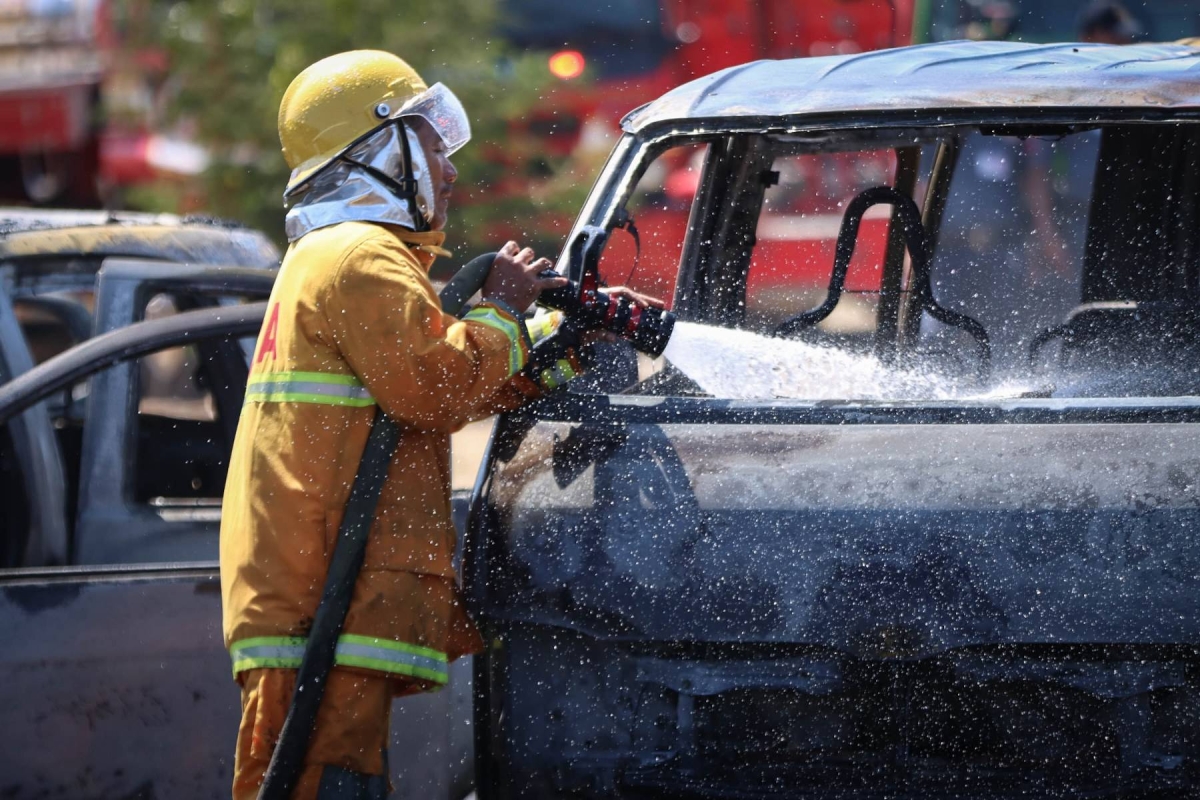The grass fire incident at Ninoy Aquino International Airport (NAIA)
The grass fire incident at Ninoy Aquino International Airport (NAIA) has raised concerns about the safety protocols and prevention measures in place at the airport.
The immediate response and prevention measures
The immediate response by airport and fire authorities is commendable, as it prevented the fire from spreading further and causing more damage. The videos circulating on social media provide a visual representation of the intensity of the fire and the efforts taken to extinguish it.
The ongoing investigation
The Bureau of Fire Protection (BFP) is currently conducting investigations to determine the root cause of the incident. This investigation is crucial not only to identify the factors that led to the fire but also to implement preventive measures to avoid similar incidents in the future.
Review of emergency response plans and fire safety measures
In the aftermath of the incident, it is essential for the airport authorities to review their emergency response plans and evaluate the effectiveness of their fire safety measures. This incident serves as a wake-up call for the need to reassess and update existing protocols to mitigate the risks associated with such incidents.
The importance of regular maintenance and inspection
Furthermore, the incident highlights the importance of regular maintenance and inspection of the airport’s infrastructure, including the car park where the fire originated. Regular inspections can help identify potential fire hazards and ensure that safety measures, such as fire alarms and sprinkler systems, are in proper working condition.
The reminder of the importance of continuous vigilance and preparedness
The grass fire incident at NAIA serves as a reminder that even the most well-established and organized airports are not immune to unforeseen emergencies. It underscores the importance of continuous vigilance, preparedness, and effective coordination between airport authorities and emergency response teams.
The need for a comprehensive investigation
In conclusion, the grass fire incident at Ninoy Aquino International Airport has sparked a need for a comprehensive investigation into the cause of the fire. It also serves as a reminder for airport authorities to review and enhance their safety protocols and preventive measures. By learning from this incident, NAIA can further strengthen its emergency response capabilities and ensure the safety and security of its passengers, staff, and infrastructure.
Other factors that may have contributed to the fire at NAIA
In addition to the favorable weather conditions, there are other factors that may have contributed to the fire at NAIA. One possible factor is human activity. It is not uncommon for fires to be caused by human actions such as careless disposal of cigarette butts or the burning of trash. These actions can easily ignite dry grass and vegetation, leading to a fire that can quickly get out of control.
Another factor that may have played a role is the proximity of NAIA to urban areas. As an international airport, NAIA is surrounded by buildings, roads, and other infrastructure. This urban environment can create a heat island effect, where temperatures are higher compared to surrounding rural areas. The combination of high temperatures and dry conditions can increase the risk of fires, as the heat can easily ignite dry grass and vegetation.
Furthermore, the presence of flammable materials near the airport could have contributed to the fire. Airports often have fuel storage facilities, which contain large quantities of highly flammable substances. If these facilities were located in close proximity to the grassland area, a fire at the storage facility could have easily spread to the surrounding vegetation.
Additionally, the lack of proper fire prevention and management strategies may have played a role in the fire at NAIA. Adequate firebreaks, which are areas cleared of vegetation to prevent the spread of fires, are essential in areas prone to wildfires. If these firebreaks were not properly maintained or if they were absent altogether, the fire could have easily spread beyond control.
The dedication to safety by Manila International Airport Authority and Bureau of Fire Protection
The Manila International Airport Authority’s dedication to safety is evident through their comprehensive safety protocols. These protocols are designed to address a wide range of emergencies, including fires, and are regularly reviewed and updated to ensure their effectiveness. Regular drills and training sessions are conducted to familiarize personnel with the proper procedures to follow in the event of an emergency.
The Bureau of Fire Protection also plays a crucial role in ensuring the safety of airports and their surrounding areas. In the aftermath of the NAIA grass fire, they will conduct a thorough investigation to determine the cause of the fire and identify any lapses in safety protocols. This investigation will provide valuable insights and recommendations to prevent similar incidents from occurring in the future. By learning from past incidents and implementing preventive measures, airports can further enhance their safety measures and minimize the risk of emergencies.
The commitment to safety and well-being
In conclusion, the response and safety measures taken in the wake of the NAIA grass fire highlight the commitment of airport and fire authorities to ensuring the safety of passengers, airport staff, and nearby residents. Through their prompt action, rigorous safety protocols, and thorough investigations, airports can continue to provide a safe environment for travelers and employees alike.







